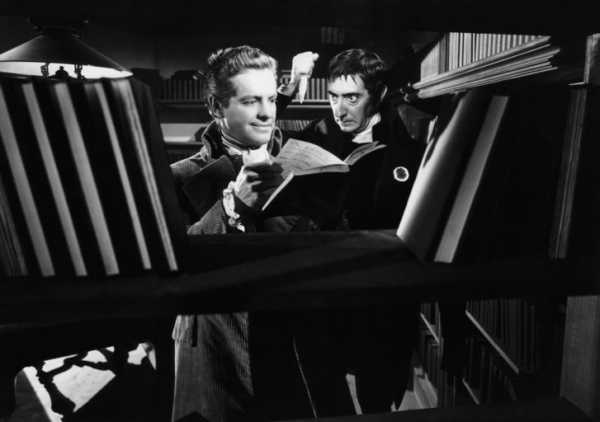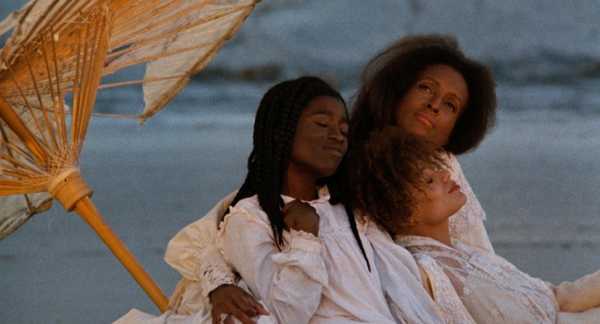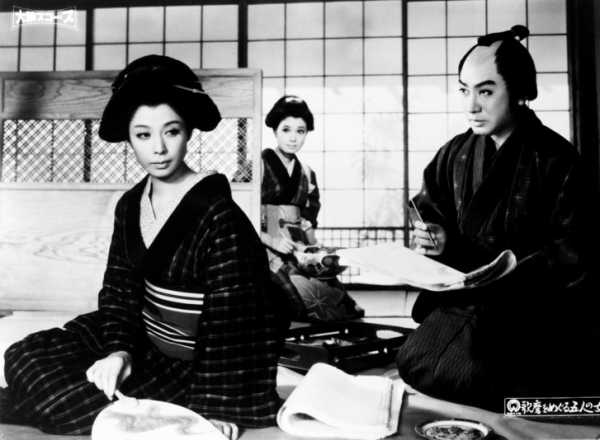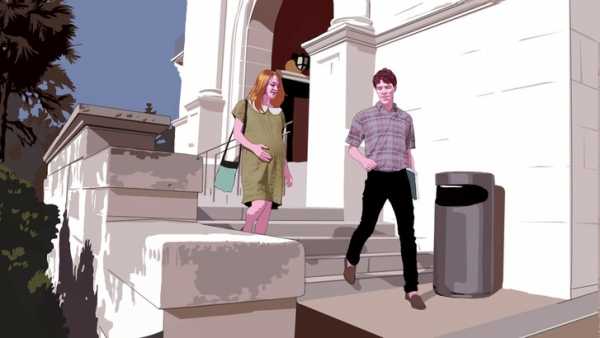
Every week, Richard Brody picks classic film, modern film, independent film, foreign film, and documentary for online viewing.
“12:08 East of Bucharest”

YouTube
The two films that will surely be among the year, “Deputy” and “Jeanette” and the historical drama opens on Friday; they resemble a wide range of other stories, in the center of the movie. The first feature of Romanian Director Corneliu Porumboiu, “12:08 East of Bucharest” made in 2006, is a story about the events of 1989, when Romanian dictator Nicolae Ceausescu was ousted from power. It is located in the small town of Vaslui, where the owner of a local television talk show a discussion took place whether there was a revolutionary uprising in the city—whether residents took part in the attempt to bring down Ceausescu. Porumboiu (which today is the most talented, Original and important of the new generation of Romanian filmmakers) the roots of the action in the little things of everyday life—a teacher of history debt-ridden and annoying his disciples; TV romantic complications. Amid trivial the harassment these hardships, though, they and their neighbors do not give rest of conscience and its relation to consciousness, a vague feeling that they were referred by the history, conceding their heroic moment that they became passive recipients of the risks and other activities. Which is to say that the film is about the actual choices faced by people in times of great crisis, and persistent relevance of the persistence of critical judgments about the events, as alleged, reported, and remembered; and the eternal state of historical crisis, that the civil liability is determined.
“12:08 East of Bucharest” is available to stream on Kanopy.
“The Black Book”

Photo of Everett
With “death of Stalin” is currently in theaters, it is necessary to consider another great movie about the paranoia of tyranny, “the black book”.to.. “Terror,” Anthony Mann’s 1949 film Noir about the Jacobin hijacking of the French revolution and, in particular, the efforts of Robespierre (Richard Good morning) to install himself as dictator of France, and the efforts of anti-authoritarian revolutionary name d Aubigny (Robert Cummings) to prevent Robespierre station. The macguffin of the film book name—Robespierre list of citizens subject to arrest and execution, which d Aubigny plans to steal in order to expose the murderous plans and to arouse popular resistance. (It foreshadows a Central place in the historical drama Michael Cimino’s “heaven’s gate”) Working with ornate, intricate script by Philip Yordan and Aeneas Mackenzie, Mann builds the violent history of deceit and double crosses, blackmail and slander—including suspicions of homosexuality and the willingness of the conspirators to trade on the suspicion. Mann also creates black-and-white palette of deep shadows and contrasts squealing, distorted spaces and passionate close-UPS, which have little in common with the usual pomp and glitz of Hollywood historical spectacle and a link to the film, or rather, tortured expressive styles from film Noir (which Mann was one of the founders and masters). Twists and madness to revolve around fear of tyrants; the drama of the addresses, masks, cold war paranoia at the time.
“The black book” available to stream on Amazon, YouTube and other services.
“Daughters of the dust”

Photo of Cohen Media group / Everett
Julie dash’s “daughters of the dust,” from 1991 is a film that is worth mentioning at every opportunity to compensate for the near silence in which she languished for nearly a quarter of a century is seeking full and deeply lived-in implementation in the beginning of the twentieth century, complete with meticulous and expressive, the costumes on a shoestring budget independent film. Dash dramatizes the moment of the Great migration, a watershed moment in the life of members of the African-American Gullah family, the Peazants who live on the island in the Atlantic ocean, off the coast of Georgia and South Carolina, and getting ready to move to the US mainland and in the North. The family spans four generations; the matriarch, Nana Peazant (Cora Lee day), embodies the living memory of slavery and African traditions of her elders remained. Drama unfolds when a delegation of the relatives is going to organize the move and to convince the whole family, including a reluctant Nana to go on a trip. Some of the young modernizers family practice devout Christianity; one member of the group represents the city, the rationalist intellectual; the other, which comes from the mainland, it’s a free-thinking hedonist. Complex conflicts and ideas which they produce—and a large historical arc that they embody—are mixed with the poetic re-creation in pictures and sounds so that in the collective memory of the Gullah Peazant family and people. Dash fusion of two is one of the greatest achievements in modern cinema.
“Daughters of dust” is available to stream on Amazon, Google, and other services.
“Utamaro and his five women”

Photo of Everett
Japanese Director Kenji Mizoguchi is one of the greatest Directors ever to delve into historical subjects (like most of his films), and his drama “Utamaro and his five women,” from 1946, is one of his best and most personal films. It is based on the life of the artist, Kitagawa Utamaro (1753-1806), who was known mainly for his portraits of women. Mizoguchi presents the artist’s work as a synthesis of art and life and aesthetic passion that led him into conflict with the authorities. Topics Utamaro were women who lived passionately his life and passion, expressed and experience great personal price, was reflected in his work. His style, rejecting the academic tradition of the time in favor of the popular ways of expression, as a result of his severe punishment—his hands were literally tied. But his powers of observation, and his involvement in love and political conflicts that surrounded him, was unabated; Utamaro witness traditional legal subordination and oppression of women, and his celebration of the strong character of women in his circle was also sad and angry denunciation of the public burden which they carried. His historical vision was a clear reflection of his own time and his own art.
“Utamaro and his five women” is available to stream on the channel criterion in FilmStruck.
“The tower”

Photo of the Kino Lorber / Everett
Reënactments beach contemporary documentary films, but “tower Keith Maitland,” in 2016, is no exception. The tower in question is located in the centre of the campus of the University of Texas at Austin, where, on August 1, 1966, Charles Whitman went up with an Arsenal of weapons and fired on campus and in surrounding neighborhoods, killing sixteen people. Maitland interview survivors of the attack, as well as community members (police officers and civilians), which is charged to the tower in order to put an end to it. In reënactments not rotoscoped (converted to animated drawings)—and so few interview, to moving effect. Interview subjects, speaking now in their sixties and seventies, which, so to speak, at the age of down—converted animations into their younger selves, it would seem, recreating their memories of the events from the point of view of the present time of the attack, and their lives at the time when it happened. The stories themselves, and to unite them in the events of that day, appalling, fascinating, thrilling, and inspiring. Historical connections who came to the event to make a rich texture of politics and civil experience. And released words from the interview participants themselves, most of which do not speak publicly about the attack because it happened the same theme of the film, as it’s an unspoken Code and clear advice which gave rise to this inappropriate and painful half a century of silence.
“The tower” available for streaming on Netflix, Amazon, and other services.
Sourse: newyorker.com






